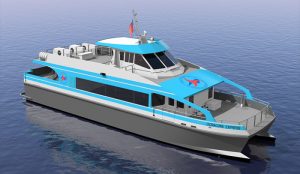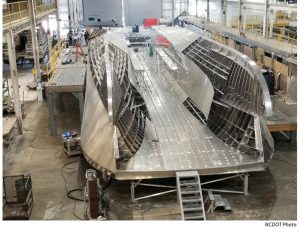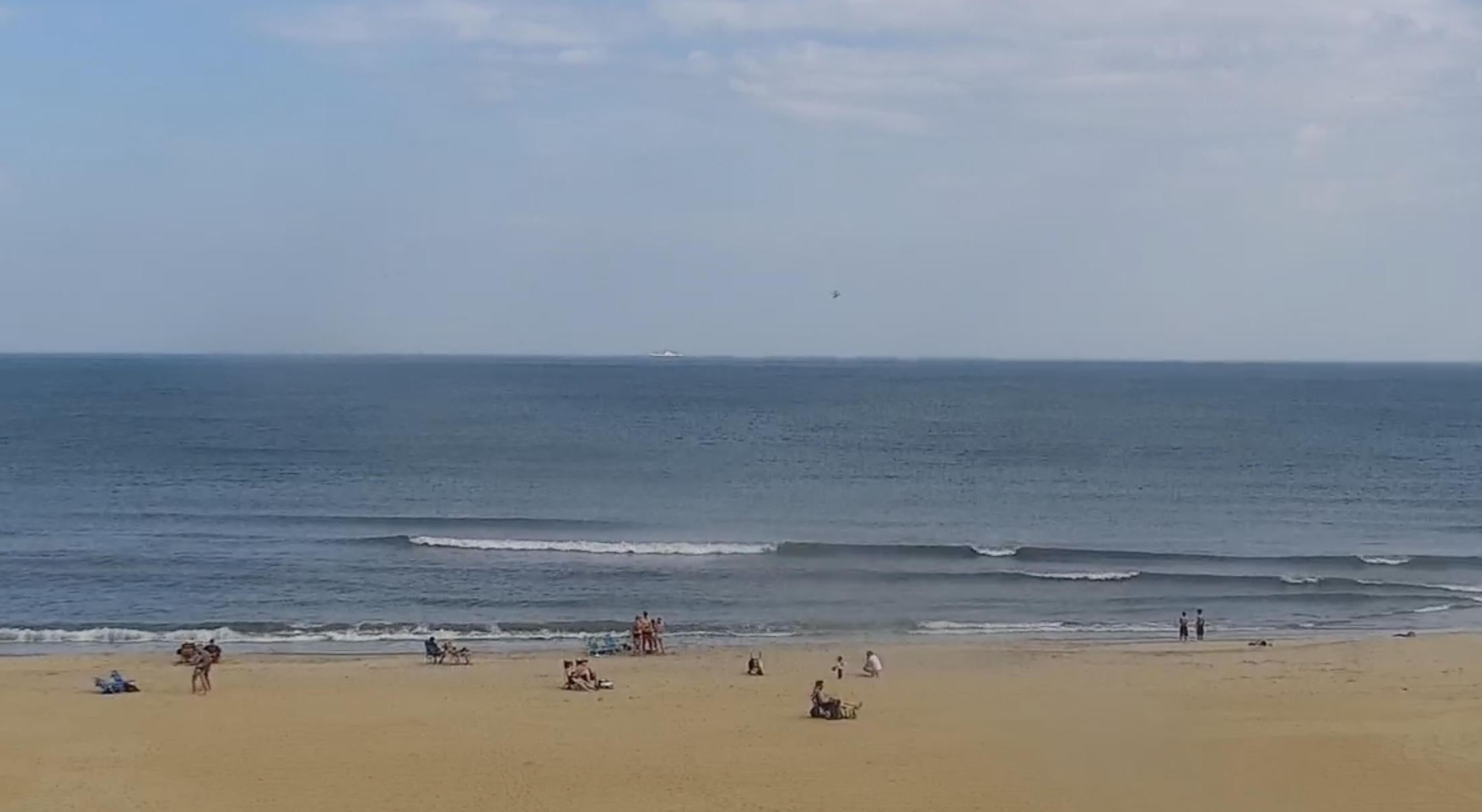 Although work has resumed building the “Ocracoke Express” passenger ferry, the N.C. Ferry Division is looking into the possibility of a rental boat for the upcoming visitor season.
Although work has resumed building the “Ocracoke Express” passenger ferry, the N.C. Ferry Division is looking into the possibility of a rental boat for the upcoming visitor season.
N.C. Ferry Division spokesman Tim Hass said Friday (March 29) that work stopped on Feb. 19 after a report from Elliott Bay Design Group, Seattle, Wash., who designed the boat, identified “several issues with the construction, among which were many of the aluminum welds. A follow-up Coast Guard inspection confirmed these issues,” Hass said in an email.
Since then, US Workboats submitted a plan for remediation of the issues that was approved by both the Coast Guard and NCDOT, and work resumed March 25.
“However, US Work Boats has been instructed not to perform any weld work on the hull without the presence of our quality assurance specialist,” Hass said.
Rep. John A. Torbett (R-Gaston), who is chair of the House Transportation Appropriations Committee, said in an interview Thursday (March 28) that Jed Dixon, Ferry Division deputy director, briefed the committee that day on the passenger ferry construction problems and other needs for the ferry system.
In the short term, they are looking at renting a ferry this year for Ocracoke.
“We’re doing everything in our power to have a walk-on ferry for Ocracoke this season,” Torbett said. “Our concern is that the island has something.”
“It’s too early to discuss which, if any, companies will submit proposals,” Hass said about a rental option.
Infrastructure–passenger shelters, dockage and even trams for Ocracoke Village–is already in place.
As for the “Ocracoke Express,” Torbett could not say if the boat is repairable or toast.
“It appears to be salvageable, but it won’t be ready for this season,” he said. “They brought in more professionals.”
Torbett said Dixon told his committee about 70 percent of the welds failed.
Questions also are unanswered about whether the electric trams, which debuted last September despite no passenger ferry, would be in use this year since they were to be run in conjunction with car-less passengers.
Hyde County received Occupancy Tax money for the trams in conjunction with the state chipping in, but it is unclear where this stands. The tram is expected to run for Easter weekend during the Ocracoke Waterfowl Festival.
In prior communication, Hass on March 11 said the Ferry Division, after learning of the construction problems, has embedded a contractor on site to monitor and provide quality control and assurance.
“Once a full mitigation plan has been received and approved by the U.S. Coast Guard, the Ferry Division should be able to tell the local stakeholders of the anticipated delivery date,” Hass said.

The aluminum catamaran-style ferry was scheduled to debut on May 14. When it does, it will carry up to 98 passengers on a 70-minute trip from Hatteras directly into Ocracoke Village.
The N.C. Dept. of Transportation in 2017 awarded a $4.15 million contract to Armstrong Marine Inc. in Swansboro to build the new boat, but Armstrong is now U.S. Workboats.
Last June, the Ferry Division announced that the new boat was taking longer to build than planned. Citing the lack of welders, the Ferry Division said the boat would not be ready for the busy tourist season.
They suggested it might be ready in the fall, but the fall came and went.
“The company is paying $1,000 a day in late penalties,” Torbett said about the boat that was to be delivered last Aug. 6. “They’re 250 days late.”
The idea of adding a passenger-only boat for the busiest Hatteras-Ocracoke run surfaced in 2015 when the long route across the Hatteras Inlet was officially sanctioned after the short ferry route between the islands became unnavigable in early 2013 due to continued shoaling.
This one-hour ferry ride has resulted in fewer runs, longer wait lines at the Hatteras terminal and fewer day-trippers visiting the island.
Islanders’ concerns with this prompted the Ferry Division to explore the purchase of a passenger ferry to help relieve the traffic lines at Hatteras.
The entire project—passenger ferry and infrastructure—is about $9 million. Funds have come from an appropriation by the N.C. General Assembly and a federal grant through the Federal Lands Access Program.















$1,000 per day in late fees, and already 250 days late? It sounds like to me that the project itself may be swirling around the drain. It’s a shame, because the idea seems good.